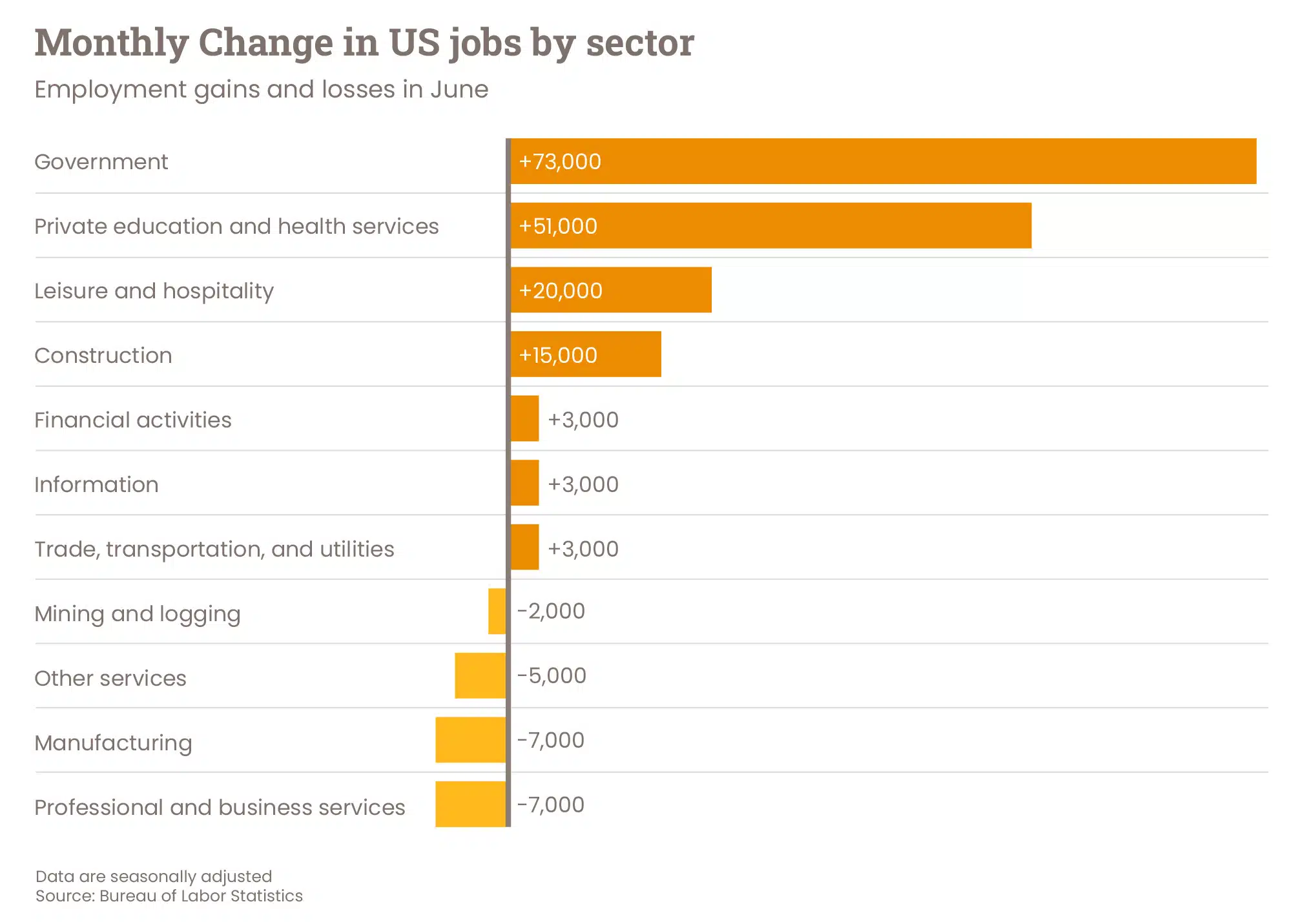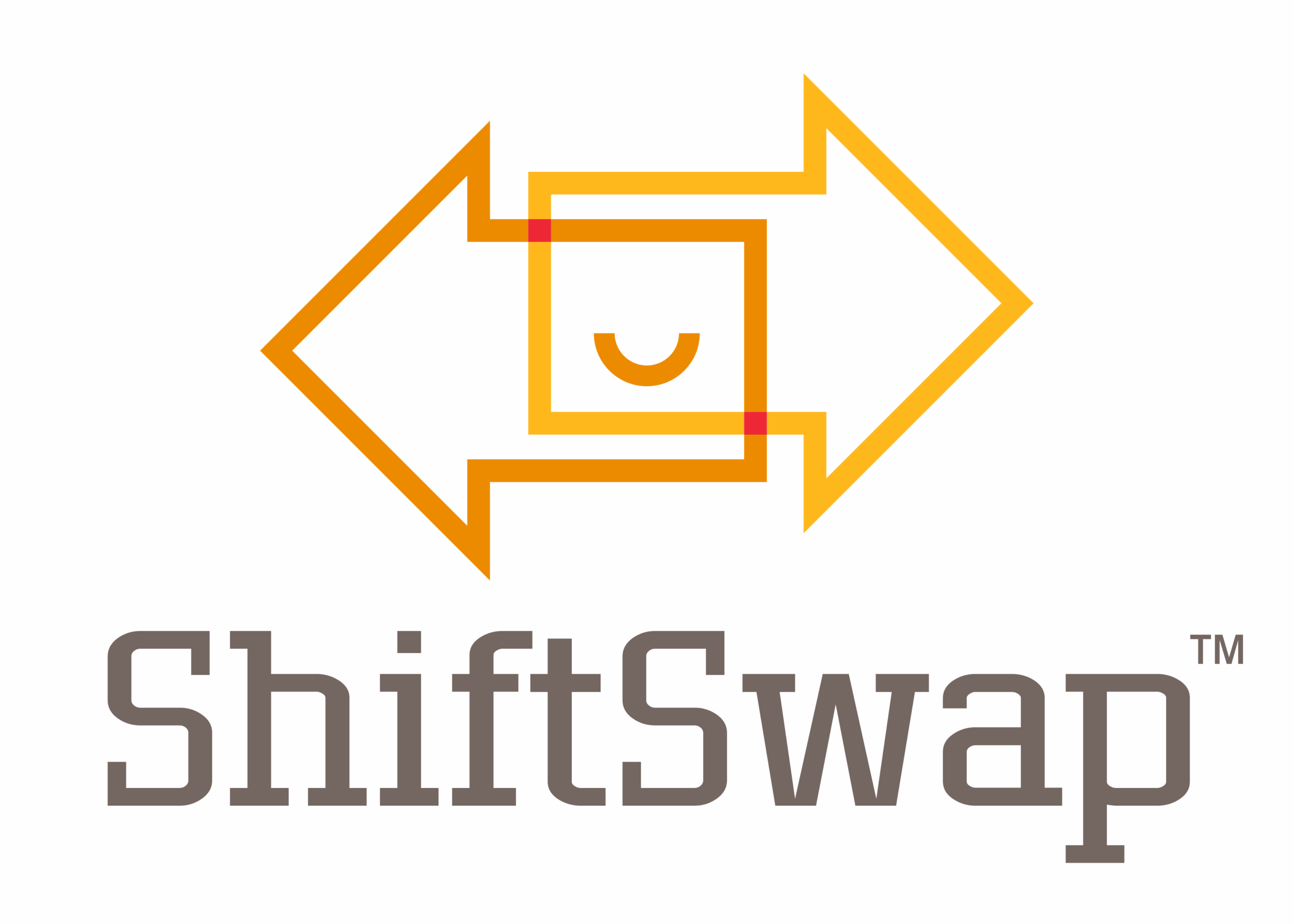Labor Market Slowdown: What June’s Jobs Report Means for Employers
U.S. job growth report from the U.S. Labor Department surprised many by staying strong in June 2025, but there’s more to the story than just the numbers. As reported by Lucia Mutikani in Reuters, almost half of the 147,000 jobs came from government hiring.
On the other hand, private-sector job growth reached its lowest point in eight months. While the unemployment rate dipped to 4.1%, a closer look reveals that this drop partly stems from people exiting the labor force altogether.
For those in operations and HR, this mixed bag of data sends a powerful signal: we’re stepping into a phase of labor market slowdown that calls for more creative and adaptable workforce strategies. The economy isn’t shrinking, but the momentum is clearly shifting. Businesses that can pivot quickly will be in a better position to keep productivity up and manage labor costs effectively.
Private-Sector Slowdown and Government Gains
Although June’s job growth exceeded expectations, the report indicates that most of the gains were concentrated in state and local government education sectors, primarily due to seasonal hiring. Private employers only added 74,000 jobs out of the 147,000, which is significantly below the average for the past three months. Industries like manufacturing, wholesale trade, and professional services actually experienced job losses. Even retail, which is usually a reliable source of new jobs, managed to add only 2,400 positions.

For industries such as logistics, warehousing, manufacturing, and retail, the slowdown in hiring reflects more than just typical cycles. It highlights a sense of caution amid economic challenges, as employers are reluctant to hire new full-time staff unless necessary. The current circumstances are where platforms like ShiftSwap™ can really shine.
Flexible shift management is becoming a preferred alternative. Whether that involves offering voluntary overtime (VTO), approving voluntary time off during slow periods, or offering shift coverage options, employers are finding ways to manage labor costs while empowering their employees.
With the added flexibility, companies can adapt to daily and weekly fluctuations without the risk of over-hiring. Additionally, it reduces the administrative burden by enabling self-service shift coverage tools with quick approvals. In a labor market slowdown, the ability to manage labor dynamically rather than statically is crucial for keeping costs in check and avoiding layoffs.
Unemployment Metrics: Behind the Drop
Even though the unemployment rate dipped to 4.1% from 4.2%, the underlying story behind the numbers is more concerning. In June alone, approximately 130,000 individuals left the labor force, and long-term unemployment took a hit, with 190,000 more people finding themselves out of work for 27 weeks or longer.
Additionally, the average workweek shrank from 34.3 hours to 34.2 hours, hinting that businesses might be cutting back on hours instead of laying off employees. While this could be a short-term strategy to save costs, erratic schedules can lead to frustration and higher turnover, particularly for hourly workers.
Rather than unpredictably slashing hours, companies could benefit from using scheduling tools that give employees more control and clarity over their shifts. This is especially important for today’s hourly workers, who often handle multiple jobs, caregiving duties, or gig work. When workers can pick up available shifts, take voluntary time off when things are slow, and check their schedules whenever they need to, they’re more likely to stay engaged, even when the economy feels shaky.
The Importance of Flexibility During Economic Shifts
The June report highlighted that most of the new private-sector jobs were in social assistance and healthcare. Outside of these industries, job growth was either stagnant or declining. With wage growth slowing down, average hourly earnings increased by only 0.2% in June, bringing the annual wage growth to 3.7%. Paired with worries of inflation and rising living expenses, employers may struggle to attract new talent or retain their current workforce without offering more substantial non-wage benefits.
Flexibility can set a company apart. By providing dynamic scheduling tools, employers can help their employees strike a balance between work and personal commitments, especially during challenging economic times. The added autonomy not only boosts morale but also reduces turnover and helps keep operations running smoothly without increasing payroll costs.
As private hiring stalls and recession chatter grows louder, operations teams need to be both lean and responsive. Workforce flexibility enables this without sacrificing output or increasing headcount. Even minor enhancements in flexibility can lead to impressive outcomes.
For instance, ShiftSwap™ users have reported:
- Up to 50% reductions in turnover within months
- Near-zero unfilled shifts in high-volume operations
- Thousands in saved overtime and labor costs
Looking Ahead: What Employers Should Prepare For
As the Federal Reserve keeps a close eye on interest rate policies, most economists now predict that any rate cuts will likely not occur until late 2025. The Fed remains focused on the risks of inflation, which suggests that borrowing costs are expected to remain high through the third quarter.
At the same time, labor shortages related to immigration are starting to affect workforce availability. With fewer workers entering the job market and companies being more cautious in their hiring practices, it may become increasingly challenging to fill shifts, particularly in positions that typically experience high turnover rates.
In this context, operational agility is more important than ever. Employers who can scale labor up or down on demand, without the need for constant hiring or costly overtime, will have a clear advantage. Tools like ShiftSwap™ help bridge the gap between rigid staffing models and real-world demand variability.
Efficiency and Flexibility Win in a Slower Market
While the overall job growth numbers might look promising at first glance, a closer look reveals a labor market that’s starting to lose momentum. Private-sector job creation is slowing down, long-term unemployment is on the rise, and wages appear to be stabilizing. For employers, particularly in sectors such as logistics, retail, healthcare, and manufacturing, now is the time to reassess labor strategies and implement systems that prioritize efficiency and employee satisfaction.
Dynamic shift management is essential in today’s labor market. With ShiftSwap™, companies can take a proactive approach to staffing, provide flexibility for their workforce, and safeguard their profits without compromising on service or quality. Now more than ever, the ability to adapt swiftly could be your organization’s most valuable asset.
Start Planning for Success
Schedule a demo with ShiftSwap™ today and learn how to streamline your workforce management.

